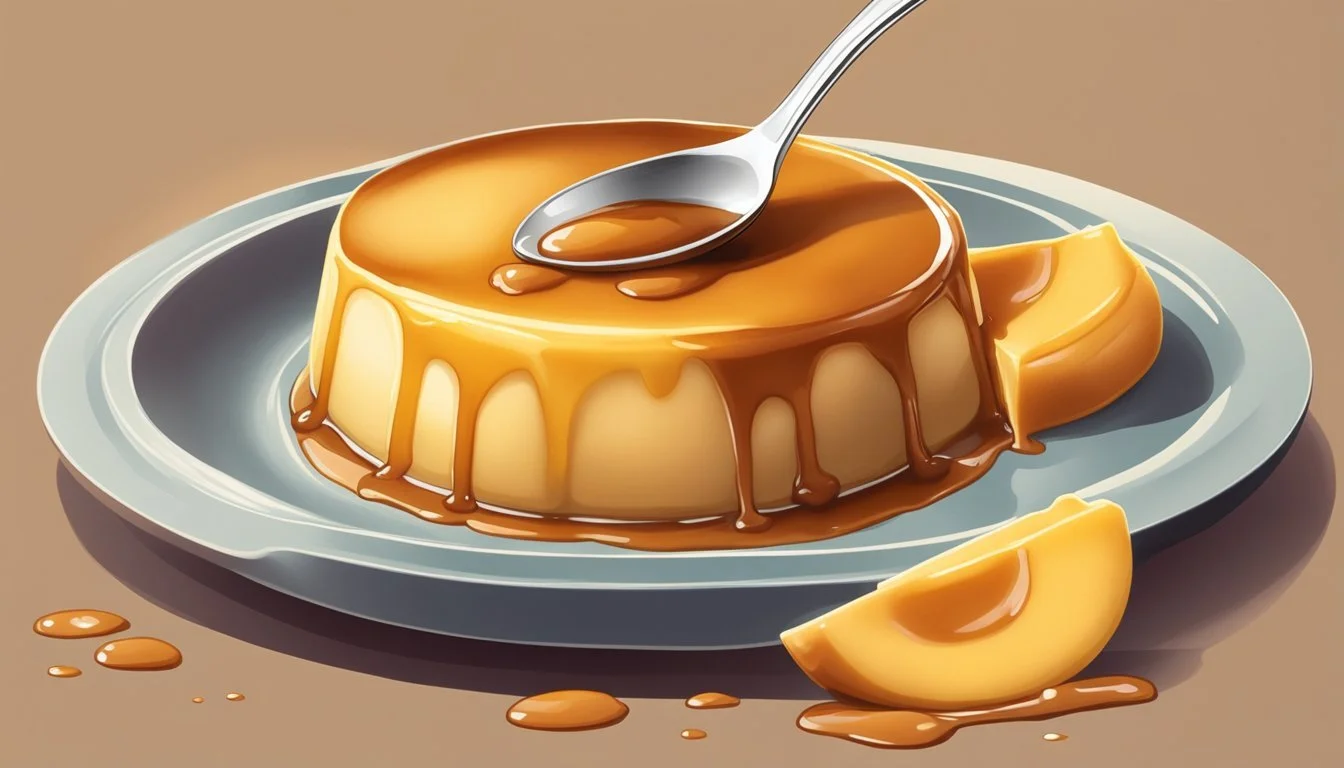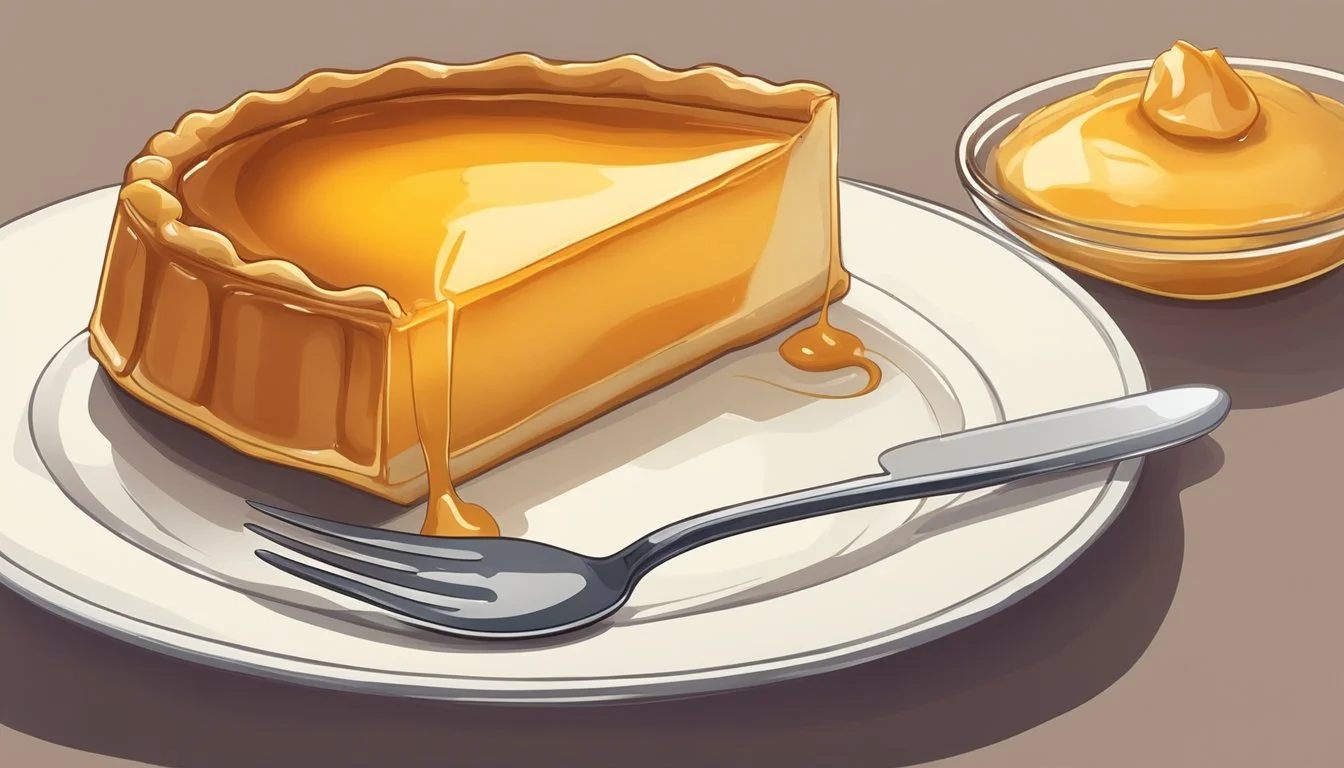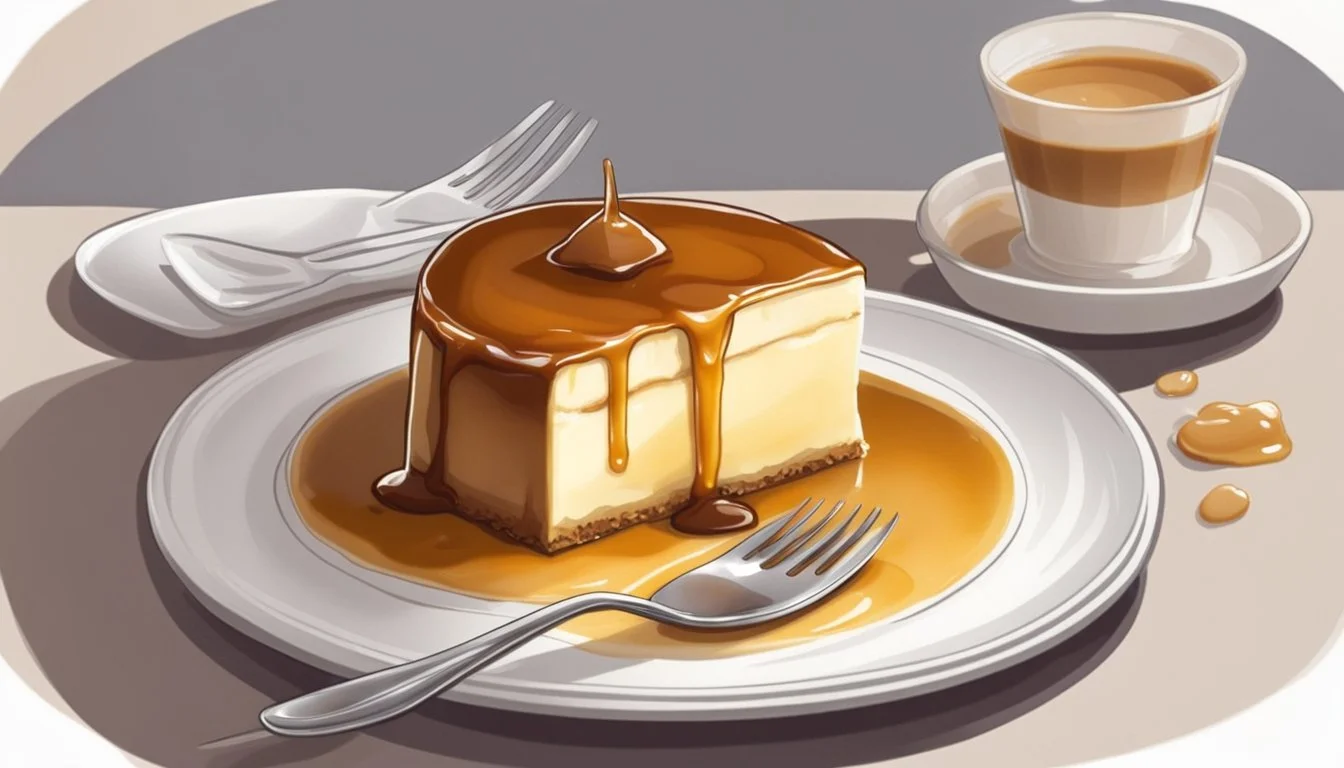How do You Eat a Flan?
Unveiling the Best Techniques
Flan, a classic dessert with its origins in Roman cuisine, has evolved to become a beloved treat in various cultures around the world. This sweet dish is essentially a rich custard with a layer of soft caramel on top. While the ingredients are fairly simple, often comprising of eggs, sweetened condensed milk, evaporated milk, and sugar, the preparation method can influence its texture and flavor deeply. The process involves gently baking the mixture in a water bath to achieve a smooth, creamy consistency, with the caramel providing a complementary syrupy contrast.
Eating flan is truly a matter of personal preference and can vary widely. Traditionally, flan is allowed to cool after baking, then chilled in the refrigerator to set. This cooling process makes the dessert denser and creamier. Once thoroughly chilled, it is inverted onto a plate, allowing the caramel sauce to elegantly coat the custard (how long do custards last?). While flan is often enjoyed cool or at room temperature, some prefer it slightly warmed to enhance its creamy texture. Regardless of serving temperature, its satisfying balance of sweetness and smoothness makes flan an exquisite culinary experience.
The versatility of flan allows it to be customized with various flavorings such as vanilla, citrus zest, or liqueurs, and be adorned with additional toppings like fresh fruit or whipped cream. Its universal appeal lies in its simplicity and the indulgent silkiness that it offers with every spoonful. Whether as a refreshing end to a summer meal or a comforting treat in colder months, flan stands out for its elegance and delectable charm.
Understanding Flan
Flan, a dessert enjoyed across the globe, is known for its custard base topped with caramel sauce. Its rich history and diverse ingredient profiles have made it a classic treat in many cultures.
Origin and Variations
Flan originated in the Roman Empire and was later adopted by Spaniards, who brought it to Mexico and other parts of Latin America. Spanish flan is traditionally a simple custard made from eggs, sugar, and milk. It is similar to the French crème caramel. Over time, flan has evolved, leading to variations like cheese flan, popular in Puerto Rico, and chocolate flan found in Mexico.
Essential Ingredients
The classic recipe for traditional Spanish flan requires:
Eggs: For the rich, creamy texture
Granulated sugar: For the custard and to create the caramel topping
Milk: Whole milk or a combination of sweetened condensed milk and evaporated milk for depth of flavor
Vanilla extract or a vanilla bean: To infuse the custard with its signature aroma
Popular Flavors and Additions
Over time, numerous flavors and additions have found their way into flan recipes to cater to diverse palates. Here are some common ones:
Chocolate, coffee, and coconut for a twist on the classic taste
Citrus notes like orange zest, or toppings such as berries, fruit, and nuts for freshness and texture
Sweeteners like honey or add-ins like almond or Nutella® for richness and variation
Nutritional Information
Flan is a dessert high in dairy and sweet components. The typical serving size contains:
High levels of sugar from the caramel and custard base
Considerable amounts of fat and calories due to the eggs and milk For those with dietary restrictions, alternatives like low-fat milk or sugar substitutes can be used, adjusting the traditional nutritional profile.
Cultural Significance
Flan is an essential sweet in many cultures, especially during celebrations like New Year's or when hosting guests. It is not just a dessert; it's a symbol of tradition and affection and is often shared among lovers and family. Its versatility and ease of preparation have solidified its status as a staple in the realm of Latin desserts.
The Flan Recipe
In crafting the perfect flan, it is vital to follow a precise sequence of steps, from selecting a suitable recipe to the crucial caramelization process, and finally to baking and serving the flan with the ideal texture and flavor.
Selecting the Recipe
When choosing a flan recipe, consider one that uses 5 simple ingredients for an easy approach. The core ingredients typically include eggs, sugar, sweetened condensed milk, heavy cream, and vanilla extract. Some variations may incorporate additional flavorings or use a mix of milk types.
Preparing the Caramel Sauce
Caramel sauce initiates the flan-making process and sets the stage for its signature taste.
Sugar and water: Dissolve sugar in a small amount of water over medium heat in a saucepan.
Low heat: Maintain low heat to prevent the sugar from burning; stir until the sugar turns into a golden-brown caramel.
Baking dish prep: Quickly pour the caramel into the baking dish—whether it's a traditional flanera or a simple ramekin—before it starts to harden.
Mixing the Custard
The custard is the heart of the flan and marries all the flavors harmoniously.
Start by blending together eggs, egg yolks, sweetened condensed milk, heavy cream, and vanilla extract until you achieve a smooth mixture.
Pour this milk mixture over the prepared caramel sauce in the baking dish.
Baking the Flan
Baking is where the magic happens as the liquid custard transforms into a delicate, firm dessert.
Preheat your oven, and place the filled baking dish in a larger roasting pan.
Pour hot water into the roasting pan to create a water bath or bain-marie, ensuring even cooking.
Cover with aluminum foil and bake until the flan is just set.
Cooling and Serving
The final steps are crucial for the flan's texture and ease of serving.
Once baked, remove the flan from the oven and allow it to cool to room temperature.
After cooling, refrigerate the flan, preferably covered with plastic wrap, to chill fully.
To serve, run a knife around the edges, invert onto a plate, and unmold the flan. The caramel sauce should gracefully flow over the custard.
Serve the flan cold as is, or with a variety of garnishes according to preference.
Presentation and Serving
Proper presentation of flan transforms it from a mere dessert to an elegant finale of a meal. The texture is a focal point, with successful unmolding being a testament to the chef's skill.
Serving the Flan
When serving flan, it is essential to cool it thoroughly, allowing the custard to fully set. A thin, flexible knife should be run around the edge of the mold to ensure that the custard is released smoothly. The dessert is typically plated by inverting the mold onto a plate, allowing the caramel sauce to elegantly coat the flan's surface. Depending on personal preference, flan can be served at different temperatures: warm, to maximize creaminess; cold, for a more refreshing sensation; or at room temperature.
Garnishing Options
To elevate the presentation, garnishes can play a significant role. Some popular garnishing options include:
Fresh fruit: Berries such as raspberries or slices of citrus fruits not only add a vibrant look but also complement the sweetness of the caramel.
Whipped cream: A dollop can add visual appeal and a rich texture.
Nuts: A sprinkle of slivered almonds or crushed nuts adds a crunchy contrast to the smooth custard.
Chocolate or cinnamon: A dusting can enhance the flan's flavor profile.
Pairings and Accompaniments
Flan is often enjoyed with complementary accompaniments to balance its sweetness and add variety to each bite. Here are suitable pairings:
Coffee: The bitterness of coffee offsets the sweet richness of the flan.
Ice Cream: Particularly flavors like vanilla or cinnamon that match well with the caramel.
Citrus zest or honey: These can contribute additional layers of flavor.
Other desserts: Flan can be served alongside other sweet dishes like tres leches cake, bread pudding, or cheesecake for a varied dessert offering.
Advanced Tips and Tricks
To elevate the classic flan to gourmet standards, it's essential to focus on technique and ingredient subtleties. The following subsections explore sophisticated strategies that can markedly enhance the flan experience.
Achieving the Perfect Texture
The texture of flan should be silky smooth and creamy, a balance attained by meticulous attention to the custard mixture and baking process. Using a fine mesh strainer to remove any coagulated egg parts before baking ensures a uniform custard without unwanted air bubbles. A water bath or bain-marie is critical for even cooking and to prevent the edges from becoming rubbery while achieving that desirable creaminess.
Troubleshooting Common Issues
Burnt caramel: Slowly heat sugar until it's a golden brown without stirring too vigorously to prevent crystallization.
Custard cracks: Overbaking is often the culprit; keep a watchful eye and employ the jiggle test—if the center slightly wobbles, the flan is done.
Difficulty unmolding: Run a knife around the flan's edge and place the serving plate on top of the ramekin before flipping swiftly.
Variations for Dietary Restrictions
Adapting flan for dietary needs doesn't have to compromise flavor:
Lactose-intolerant: Substitute traditional dairy with lactose-free milk or dairy-alternative options like almond or coconut milk.
Gluten-sensitive: Ensure that all flavorings and mix-ins like chocolate chips or nutella are gluten-free. Flan is naturally gluten-free.
Creating Signature Flan Recipes
Personalize your flan by experimenting with flavors and ingredients:
Select from vanilla bean, chocolate chips, coconut, coffee, mint, or orange zest for a unique twist.
Incorporate Nutella for a chocolate-hazelnut version or infuse the milk with coffee for a mocha-flavored dessert.
To achieve the creamiest texture, use a combination of egg yolks, whole milk, sweetened condensed milk, and evaporated milk in the custard base.
Storage and Leftovers
Storing flan correctly is essential for maintaining its texture and flavor, while proper reheating can rejuvenate its creamy consistency for later enjoyment. Here's a detailed guide to manage your sweet custard with care.
Proper Storage Techniques
After flan has cooled, it should be transferred to the refrigerator to achieve its desired consistency. To store flan: wrap it tightly with plastic wrap or place it in an airtight container to prevent air exposure and contamination from other foods. It's best to store flan in the fridge within two hours of cooking to ensure food safety. For optimal taste, one might refrigerate flan for 4 to 6 hours before serving to let the flavors meld.
Fridge: Best for short-term storage of up to a few days.
Freezer: Not recommended, as freezing can alter the custard's texture.
Reheating and Refreshing Flan
Leftover flan can be enjoyed warm or cold based on personal preference. If one opts for a warm dessert, the flan can be gently reheated. To reheat flan, place it in an oven-safe dish, cover it with foil, and warm it in a preheated oven at 350 degrees Fahrenheit for about 15-20 minutes. A water bath can also be used for reheating on low heat, ensuring that the flan heats evenly without cooking further.
Oven: Preheat to 350°F, cover with foil, and heat (15-20 min).
Water Bath: Use low heat and ensure even, gentle warming.
Creative Uses for Leftover Flan
When presented with leftovers, one has the opportunity to repurpose flan into novel dessert creations. Leftover flan can be served as a portion of its original state or creatively integrated into other sweets. For instance, one might chop the flan and fold it into cake fillings or trifles, offering a rich custard layer. Alternatively, left over flan can be used as a topping for pancakes or waffles during a decadent breakfast.
Integrated Desserts: Trifles, pudding cakes, sweet fillings.
Breakfast Delight: Pancakes or waffle topping for a rich twist.
Conclusion
Flan, a classic dessert with roots in Roman and Spanish cuisine, has withstood the test of time. The appeal of flan lies in its versatility and the simplicity of its recipe. A flan is typically made using eggs, condensed milk, sugar, and flavorings such as vanilla. One of its distinctive features is the caramelized sugar that tops the dessert once inverted onto a plate.
Serving Temperature: One can enjoy flan at various temperatures. While traditionally served cold, providing a refreshing and solid texture, many find it creamiest and most indulgent when warm. There’s no right or wrong—it's a matter of personal preference.
Presentation: To present a flan, simplicity is key. The glossy caramel layer on top of the perfectly set custard speaks for itself. However, garnishes like a sprig of mint or a few fresh fruits can add a touch of elegance.
Eating Flan:
A spoon is the go-to utensil, neatly slicing through the custard.
Savor the flan slowly to appreciate the delicate flavor profile and the contrast between the sweet caramel and the rich, creamy custard.
In short, whether one's preference is for a homemade recipe or enjoying it at a favorite restaurant, flan remains a dessert that invites personalized interpretation while maintaining its status as a beloved sweet treat in culinary traditions worldwide.







